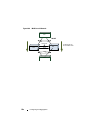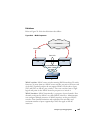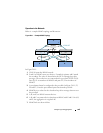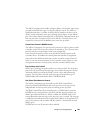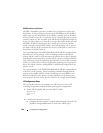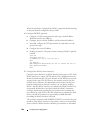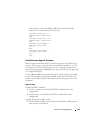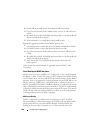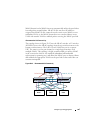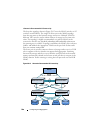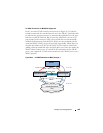
942 Configuring Link Aggregation
DCPDP and Peer Link Failures
DCPDP is intended to provide a secondary layer of protection against peer
link failures. If the peer-link goes down but the DCPDP protocol is enabled
and remains up, the MLAG links on the MLAG secondary peer are disabled.
If the peer-link is restored, a new primary switch is elected, the primary switch
assumes control over the secondary peer, and the MLAG links are brought up.
In the case where there are no keep-alive messages detected from the peer and
DCPDP is disabled, but both peer units remain up, two primary switches
result, each with a unique MAC address, and each operating over its part of
the former MLAG. In this situation, the selection of dynamic or static LAGs
determines the MLAG behavior.
On a peer-link failure with DCPDP disabled and the MLAG configured with
dynamic LAGs to the partners, traffic forwarding continues through the
primary MLAG switch. LACP running on the partner device detects that the
port-channel connected to the secondary MLAG switch is sending LACPDUs
with a different system ID and brings down the links connected to secondary
MLAG peer. This behavior reduces or eliminates spanning tree reconvergence
due to the MLAG switches sending BPDUs with different bridge IDs to the
partner switch.
On a peer-link failure with DCPDP disabled and the MLAG configured with
static LAGs to the partners, traffic forwarding continues through both the
primary and secondary MLAG switches. Spanning tree sends BPDUs with
different bridge IDs to the partner switch, resulting in serial spanning tree
reconvergence. For this reason, dynamic MLAGs are strongly recommended.
L2 Configuration Steps
This section describes how to configure two MLAG peers in a basic L2
switching configuration with the default spanning-tree configuration.
1
Enable MLAG globally and create the MLAG VLANs:
feature vpc
vlan 10-17
exit
2
Configure the keep-alive protocol:
a
Configure the device priority using the
role
command, if desired. This
should be configured differently for each of the MLAG peers.



